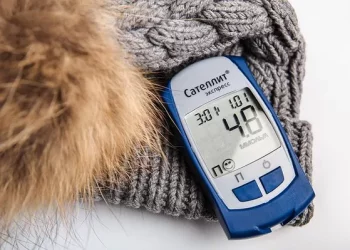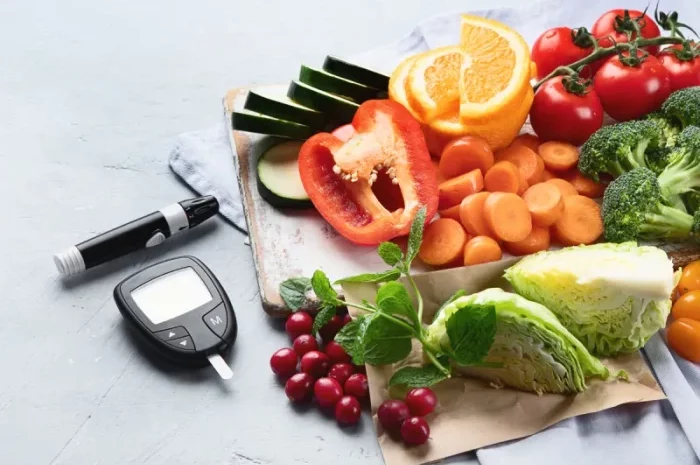High blood sugar, also known as hyperglycemia, is a hallmark of diabetes. If left unmanaged, elevated blood glucose levels can lead to severe health complications, including cardiovascular diseases, nerve damage, and kidney problems. Fortunately, one of the most effective ways to manage high blood sugar is through proper dietary choices. By incorporating foods that promote healthy blood sugar levels into your daily meals, you can improve your overall health and manage diabetes more effectively.
In this article, we will explore the types of foods that are beneficial for controlling high blood sugar. These foods not only help in managing blood glucose levels but also provide essential nutrients that support general health and well-being. We will examine various food groups, from vegetables and fruits to grains, legumes, and protein sources, that can help stabilize blood sugar levels.
Understanding the Role of Diet in Blood Sugar Management
Before diving into specific foods, it is essential to understand the relationship between diet and blood sugar. When we eat, our bodies break down food into glucose (sugar), which is used as a primary source of energy. However, in people with diabetes or insulin resistance, the body struggles to regulate blood glucose levels properly. The pancreas either does not produce enough insulin or the body becomes less responsive to insulin, leading to high blood sugar levels.
Maintaining a balanced diet that helps regulate blood sugar levels is critical for managing diabetes. Consuming foods with a low glycemic index (GI) and avoiding processed, high-carb, and sugary foods can significantly reduce the risk of blood sugar spikes. Additionally, high-fiber foods, healthy fats, and lean proteins help slow down glucose absorption, stabilize insulin levels, and improve overall glucose control.
Vegetables: Low-Carb, Nutrient-Dense Options
Vegetables are essential for any diabetic diet. Most vegetables are low in carbohydrates, high in fiber, and packed with vitamins and minerals that help control blood sugar levels. They are also low in calories, which is beneficial for those looking to manage their weight.
Leafy Greens
Leafy greens like spinach, kale, and Swiss chard are some of the best foods for managing high blood sugar. These vegetables are low in carbohydrates, high in fiber, and contain essential nutrients such as magnesium and potassium, which support blood sugar regulation. Leafy greens also contain antioxidants that help reduce inflammation and oxidative stress, which are often elevated in people with diabetes.
Cruciferous Vegetables
Cruciferous vegetables, such as broccoli, cauliflower, Brussels sprouts, and cabbage, are excellent choices for managing blood sugar levels. These vegetables are rich in fiber, vitamins, and minerals and have a low glycemic index. They also contain compounds like sulforaphane, which have been shown to improve insulin sensitivity and protect against blood sugar spikes.
Non-Starchy Vegetables
Non-starchy vegetables, including bell peppers, cucumbers, zucchini, and tomatoes, are also beneficial for controlling blood sugar. These vegetables are low in carbs and provide important nutrients, including vitamins A, C, and K. They can be eaten in large portions without causing a significant increase in blood sugar, making them ideal for people with diabetes.
Fruits: Choosing the Right Options for Blood Sugar Control
Fruits, when consumed in moderation, can provide important nutrients like fiber, vitamins, and antioxidants. However, some fruits are higher in sugar than others and can cause blood sugar spikes. The key is choosing fruits with a low glycemic index that are high in fiber and nutrients.
Berries
Berries, such as strawberries, blueberries, raspberries, and blackberries, are among the best fruits for diabetes. These fruits are rich in antioxidants, particularly anthocyanins, which help improve insulin sensitivity and protect against blood sugar fluctuations. They are also high in fiber, which slows the absorption of sugar into the bloodstream and helps maintain stable blood glucose levels.
Apples and Pears
Apples and pears are high in fiber, especially when consumed with their skins. The fiber content helps slow down the digestion of sugars, preventing rapid increases in blood glucose. Apples and pears also have a relatively low glycemic index, making them a great choice for managing blood sugar.
Citrus Fruits
Citrus fruits like oranges, grapefruits, lemons, and limes are excellent for controlling blood sugar. They are low in carbohydrates and high in vitamin C, an antioxidant that supports immune function and reduces inflammation. The fiber in citrus fruits also helps regulate glucose levels by slowing the absorption of sugar.
Cherries
Cherries are another great option for people with diabetes. They contain anthocyanins, which improve insulin sensitivity and may help reduce the risk of developing diabetes-related complications. Cherries also have a low glycemic index, making them suitable for those looking to control their blood sugar.
Whole Grains: Better Choices for Stable Blood Sugar
Whole grains are a valuable source of fiber, vitamins, and minerals that help regulate blood sugar levels. Unlike refined grains, which can cause blood sugar spikes, whole grains are digested more slowly, helping to prevent rapid increases in blood glucose. When choosing grains, it is essential to opt for whole, unprocessed options.
Oats
Oats are an excellent whole grain for managing high blood sugar. They contain beta-glucan, a type of soluble fiber that helps lower cholesterol and stabilize blood glucose levels. Oats also have a low glycemic index, which means they are digested slowly and have a minimal effect on blood sugar.
Quinoa
Quinoa is a nutrient-dense whole grain that provides all nine essential amino acids, making it a complete protein. It is also high in fiber and has a relatively low glycemic index, which makes it an excellent choice for managing blood sugar. Quinoa is versatile and can be used in a variety of dishes, from salads to grain bowls.
Brown Rice
Brown rice is a whole grain that contains more fiber and nutrients compared to white rice. The fiber in brown rice helps regulate blood sugar by slowing down the absorption of glucose. It also has a lower glycemic index than white rice, making it a better option for people with diabetes.
Barley
Barley is another whole grain that can help lower blood sugar levels. It is rich in soluble fiber, which helps slow the absorption of glucose and improve insulin sensitivity. Barley has a low glycemic index, making it a great option for managing blood sugar.
Legumes: Protein-Packed and Fiber-Rich Options
Legumes, including beans, lentils, and peas, are high in protein and fiber, both of which are essential for controlling blood sugar. The fiber in legumes helps slow the absorption of glucose, preventing rapid blood sugar spikes. Additionally, the protein content helps regulate insulin levels and promotes satiety, reducing the likelihood of overeating.
Lentils
Lentils are an excellent source of protein and fiber, making them ideal for managing blood sugar. They are low in carbohydrates and have a low glycemic index. Lentils also contain minerals like iron and folate, which support overall health and blood sugar regulation.
Chickpeas
Chickpeas, also known as garbanzo beans, are high in fiber and protein, both of which help stabilize blood glucose levels. They are a great addition to salads, soups, and stews, providing a satisfying and nutritious option for people with diabetes.
Black Beans
Black beans are rich in fiber and protein, making them an excellent choice for managing blood sugar. They are low in fat and provide important nutrients like magnesium and potassium, which support healthy blood sugar regulation. Black beans also have a low glycemic index, making them a great food for stabilizing blood glucose levels.
Healthy Fats: Supporting Insulin Sensitivity
In addition to carbohydrates and proteins, fats play a crucial role in blood sugar management. Healthy fats, such as those found in avocados, nuts, and seeds, can help improve insulin sensitivity, reduce inflammation, and provide long-lasting energy without causing blood sugar spikes.
Avocados
Avocados are a rich source of monounsaturated fats, which are heart-healthy and help improve insulin sensitivity. They are also high in fiber, which helps regulate blood sugar levels. The healthy fats in avocados slow the digestion of carbohydrates, preventing rapid increases in blood glucose.
Nuts and Seeds
Nuts and seeds, such as almonds, walnuts, chia seeds, and flaxseeds, are packed with healthy fats, fiber, and protein. They have a low glycemic index and can help improve insulin sensitivity. Consuming a small handful of nuts or seeds as a snack can help stabilize blood sugar levels and keep you feeling full longer.
Olive Oil
Olive oil is another source of monounsaturated fats that can support healthy blood sugar regulation. It has been shown to improve insulin sensitivity and reduce inflammation. Using olive oil in cooking or as a salad dressing can provide a healthy fat source without causing blood sugar spikes.
Lean Proteins: Stabilizing Blood Sugar
Protein is an essential nutrient that helps stabilize blood sugar levels by slowing the absorption of glucose and promoting satiety. Choosing lean protein sources is important for maintaining a healthy weight and preventing blood sugar imbalances.
Skinless Poultry
Skinless poultry, such as chicken and turkey, is a lean source of protein that can help regulate blood sugar. These meats are low in fat and calories, making them a healthy option for people with diabetes.
Fish
Fish, particularly fatty fish like salmon, mackerel, and sardines, is a great source of protein and healthy omega-3 fatty acids. Omega-3s have been shown to improve insulin sensitivity and reduce inflammation, which is beneficial for managing blood sugar levels. Fish is also rich in vitamin D, which supports overall health and may improve blood sugar control.
Tofu and Tempeh
Tofu and tempeh are plant-based protein sources made from soybeans. They are low in carbohydrates and high in protein, making them an excellent choice for managing blood sugar. Tofu and tempeh are also rich in calcium and iron, which support bone health and overall well-being.
Conclusion
Managing high blood sugar through diet is one of the most effective ways to control diabetes and prevent complications. By focusing on whole, nutrient-dense foods like vegetables, fruits, whole grains, legumes, healthy fats, and lean proteins, you can stabilize blood glucose levels and improve your overall health. It is important to remember that no single food will magically lower blood sugar. A balanced, well-rounded diet, combined with regular physical activity and proper medical care, is the best approach to managing diabetes and promoting a healthy lifestyle.
Always consult with a healthcare provider or dietitian to tailor your diet to your specific needs and ensure that you are making the best choices for your blood sugar management.
Related topics:
What Diet Is Best for High Blood Sugar?

























